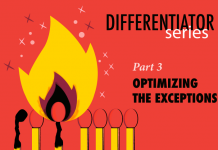
In our mid-year look at five“hot” topics that have been garnering much attention recently, our last post offered insights into why employee engagement is so critical to modern contact centers.
Next on our list, and equally vital to contact centers, are the challenges brought about by the Internet of Things (IoT) and the increased complexity for meeting customers’ expectations for service and support.
We reached out to TELUS International CIO Michael Ringman for his thoughts on the what, why and how of IoT-enabled service strategies.

Chief Information Officer
TELUS International
WHY IOT-ENABLED SERVICE STRATEGIES ARE A HOT TOPIC RIGHT NOW:
By 2019, there will be an estimated 2.1 billion IoT-consumer devices on the market, according to research published by IDC. Millions of customers around the world will be reaping the benefits of IoT-enabled products, but many will also come face-to-face with the problems associated with an environment of interconnected objects. Connected consumer applications means managing devices and services across multiple vendors, with customers uncertain where to turn when problems arise. In addition, a vast number of users don’t know how to operate their devices or aren’t aware of their full capabilities. This poses new customer service challenges in problem identification and resolution for vendors, but it also signifies huge opportunity for differentiation through proactive customer support.
HOW IT’S AFFECTING CONTACT CENTERS:
The contact center will play a critical role in delivering a great customer experience with the complexity of IoT-interactions requiring more support from customer service agents, not less. It’s no longer about understanding the technical requirements of one single device, but about how that device interacts within an entire ecosystem of products. IoT-related problems can quickly reach the limits of the decision tree, requiring skilled agents who can think creatively and cope with unusual contexts. As a result, agents will need to have the training and capabilities to provide consistent, cross-channel handling, and in many cases, be certified to address privacy and security issues related to IoT. Success metrics will also need to evolve beyond average handle time, to account for the additional resources and time needed to achieve a positive resolution.
WHAT ACTIONS CC LEADERS NEED TO TAKE NOW:
Given the evolving requirements and skillsets needed from a contact center agent supporting IoT products, leaders must start re-evaluating and recalibrating their hiring criteria. A pleasant demeanor and helpful attitude remain important, but tech-savvy, knowledgeable and problem-solving attributes become critical. This is all the more important in industries such as healthcare, where an agent’s actions can significantly impact the well-being of a patient. Further, leaders should prepare and account for the continual expansion of knowledge bases given the multiple variables in an IoT environment, and the constant innovation and deployment of new IoT products in the customer landscape. Investing in artificial intelligence and data analytics will also prove helpful in the agent’s support of the entire customer journey.
WHAT TO EXPECT IN THE NEXT 12-24 MONTHS:
Despite a popular belief to the contrary, a majority of IDC survey respondents anticipate a 10% to 50% increase in the contact center agent population to help meet the growing demands and opportunities related to IoT. Forward-thinking companies will use innovation, knowledge and service excellence as a way to differentiate themselves in this growing and competitive marketplace. And for many, finding a contact center partner with skilled agents that can deliver seamless support across a multitude of platforms may be the key to delivering successful end-to-end service in a mixed IoT environment.
Stay tuned for the next hot topic in this series.



